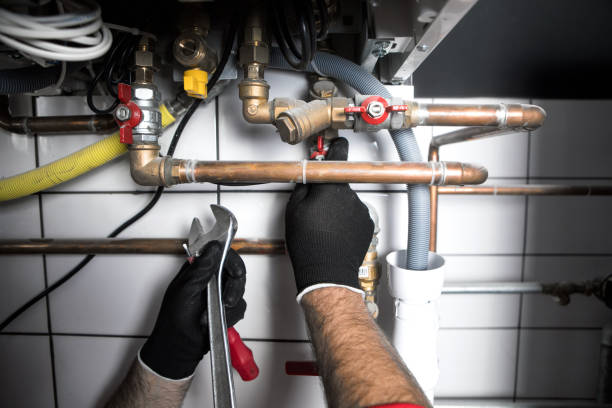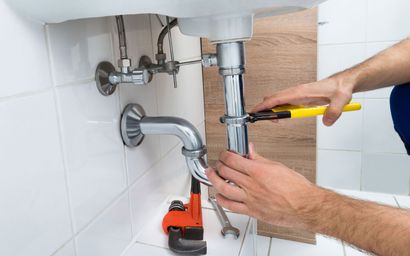How to Understand Your Property's Plumbing System Anatomy
How to Understand Your Property's Plumbing System Anatomy
Blog Article
What are your thoughts regarding Understanding Your Home's Plumbing Anatomy?

Comprehending exactly how your home's pipes system works is important for every single house owner. From supplying tidy water for drinking, cooking, and showering to safely eliminating wastewater, a well-maintained plumbing system is critical for your household's wellness and comfort. In this detailed overview, we'll discover the elaborate network that comprises your home's pipes and offer suggestions on maintenance, upgrades, and dealing with common issues.
Intro
Your home's pipes system is more than simply a network of pipelines; it's a complicated system that ensures you have accessibility to clean water and effective wastewater removal. Understanding its elements and exactly how they interact can aid you protect against pricey repair services and make certain every little thing runs smoothly.
Basic Elements of a Pipes System
Pipes and Tubing
At the heart of your plumbing system are the pipes and tubing that bring water throughout your home. These can be constructed from numerous products such as copper, PVC, or PEX, each with its advantages in terms of longevity and cost-effectiveness.
Components: Sinks, Toilets, Showers, and so on.
Components like sinks, commodes, showers, and tubs are where water is utilized in your house. Comprehending just how these components attach to the plumbing system assists in detecting problems and planning upgrades.
Valves and Shut-off Points
Valves manage the circulation of water in your pipes system. Shut-off shutoffs are essential throughout emergency situations or when you need to make repair work, permitting you to isolate parts of the system without interrupting water circulation to the entire home.
Water System
Main Water Line
The primary water line attaches your home to the local supply of water or a private well. It's where water enters your home and is dispersed to numerous fixtures.
Water Meter and Pressure Regulatory Authority
The water meter measures your water usage, while a pressure regulatory authority makes sure that water flows at a risk-free pressure throughout your home's pipes system, stopping damages to pipelines and components.
Cold Water vs. Warm water Lines
Comprehending the distinction between cold water lines, which supply water straight from the primary, and hot water lines, which carry heated water from the hot water heater, assists in repairing and planning for upgrades.
Drainage System
Drain Pipes Water Lines and Traps
Drain pipes carry wastewater far from sinks, showers, and bathrooms to the sewer or sewage-disposal tank. Traps avoid sewer gases from entering your home and also catch particles that could cause clogs.
Ventilation Pipes
Air flow pipes enable air right into the drainage system, protecting against suction that could reduce drainage and create catches to empty. Correct air flow is necessary for keeping the integrity of your plumbing system.
Relevance of Proper Drain
Ensuring proper water drainage prevents backups and water damages. Frequently cleaning up drains pipes and keeping traps can prevent expensive fixings and extend the life of your plumbing system.
Water Furnace
Types of Water Heaters
Hot water heater can be tankless or conventional tank-style. Tankless heating systems heat water on demand, while tanks keep heated water for instant usage.
Upgrading Your Plumbing System
Factors for Updating
Updating to water-efficient fixtures or replacing old pipes can improve water quality, lower water costs, and increase the value of your home.
Modern Plumbing Technologies and Their Benefits
Explore technologies like clever leakage detectors, water-saving commodes, and energy-efficient water heaters that can conserve cash and lower ecological influence.
Price Factors To Consider and ROI
Compute the ahead of time expenses versus long-term savings when thinking about pipes upgrades. Numerous upgrades spend for themselves via decreased utility expenses and fewer repair work.
Just How Water Heaters Connect to the Plumbing System
Comprehending just how water heaters link to both the cold water supply and warm water circulation lines helps in identifying issues like insufficient hot water or leaks.
Maintenance Tips for Water Heaters
On a regular basis flushing your water heater to eliminate debris, examining the temperature level settings, and checking for leaks can expand its lifespan and boost energy efficiency.
Common Plumbing Issues
Leakages and Their Causes
Leaks can occur as a result of aging pipelines, loose installations, or high water pressure. Addressing leaks promptly stops water damage and mold development.
Clogs and Blockages
Obstructions in drains pipes and toilets are commonly caused by purging non-flushable things or a build-up of grease and hair. Making use of drain screens and bearing in mind what decreases your drains can protect against clogs.
Indications of Pipes Problems to Expect
Low water stress, sluggish drains, foul odors, or abnormally high water costs are indications of potential plumbing troubles that must be addressed without delay.
Plumbing Upkeep Tips
Regular Inspections and Checks
Schedule annual pipes inspections to catch concerns early. Look for indications of leaks, rust, or mineral build-up in faucets and showerheads.
Do It Yourself Maintenance Tasks
Easy tasks like cleansing faucet aerators, looking for toilet leaks using dye tablets, or protecting subjected pipelines in chilly environments can prevent significant pipes issues.
When to Call an Expert Plumber
Know when a plumbing concern requires expert experience. Trying intricate repairs without appropriate expertise can lead to more damages and greater repair costs.
Tips for Decreasing Water Use
Easy behaviors like dealing with leakages promptly, taking shorter showers, and running complete loads of laundry and meals can save water and lower your utility expenses.
Eco-Friendly Plumbing Options
Consider lasting plumbing materials like bamboo for flooring, which is durable and environment-friendly, or recycled glass for kitchen counters.
Emergency situation Preparedness
Steps to Take During a Pipes Emergency
Know where your shut-off shutoffs lie and just how to switch off the water in case of a burst pipe or significant leakage.
Relevance of Having Emergency Situation Get In Touches With Useful
Maintain call info for local plumbers or emergency situation services readily offered for fast reaction during a plumbing situation.
Ecological Effect and Conservation
Water-Saving Components and Devices
Setting up low-flow faucets, showerheads, and toilets can dramatically minimize water use without compromising performance.
Do It Yourself Emergency Fixes (When Appropriate).
Temporary solutions like using air duct tape to spot a leaking pipeline or putting a pail under a dripping faucet can minimize damages up until an expert plumbing technician arrives.
Final thought.
Understanding the makeup of your home's pipes system empowers you to preserve it efficiently, conserving money and time on repairs. By adhering to routine maintenance regimens and staying informed concerning contemporary pipes technologies, you can guarantee your plumbing system runs successfully for many years to come.
HOW YOUR PLUMBING SYSTEM WORKS
Which Pipes Do What?
Blue lines = fresh water supply entering the building Red lines = hot water supply entering the building Grey lines = pipes carrying waste away from the building and venting pipes carrying gases away from the building (through the roof) YOUR MAIN PLUMBING SYSTEMS
There are two main plumbing systems that support your home s basic plumbing needs one that brings clean water into your home, and one that sends dirty water away from your home. Connected to the toilet, bath, shower, and other faucets in your home, these two systems keep your water flowing in the right directions.
ACCESSING FRESH WATER
Fresh and clean water is brought into your home through the main water supply line . Filtered through one pipe, this water is pressured to flow into the various fixtures in your home at any given time.
This water can be sourced from a well located on your property, a pond or river (mostly cottages), or, as in most cases, from the city s municipal water treatment centre. However, it is important to note that water that is untreated, such as the water siphoned from ponds or rivers, may not be safe to drink. Personal water supplies always need to be treated for hardness and contaminants before consumed.
MUNICIPAL WATER SUPPLIES
Improve taste and odour Remove sediment Eliminate hardness Reduce chlorine COLD WATER SUPPLY VS. HOT WATER SUPPLY
Cold water flows into your home or building through the service line, which then distributes hot or cold water to your fixtures. This line is most commonly run through a central column that runs floor to floor. Hot water runs in short and straight pipes as the longer the pipeline, the more heat that will be lost in the transfer. Having shorter pipes also allows residents to access hot water more quickly.
WASTE WATER SYSTEM
Your wastewater system is divided into two parts pipes that send wastewater away from your home and venting pipes that send sewer gas away from your home. Sewage water travels through pipes that flush the water and waste towards local sewers that are operated and managed by your city or town. Most sewer systems rely on gravity to move the wastewater to where it needs to go.
The further away from your toilet or sink, the larger wastewater pipes become. This allows for waste to be disposed of from various parts of your home or business at once without pipe blockages. The angle and flow of these pipes are also essential for keeping your waste pipes clear of build up.
https://harrisplumbing.ca/how-your-home-plumbing-system-works/

I stumbled upon that content about Plumbing Installation 101: All You Need to Know when doing a lookup on the search engines. Feel free to set aside a second to share this blog posting if you liked it. Thank you so much for your time spent reading it.
Click Here Report this page